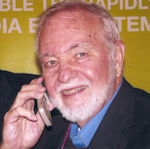Thanks to the latest digital cable techniques, cable TV providers are offering more services. Digital set-top-box sales are soaring, with over 60 million shipped this year and over 80 million expected in 2005. Along with these new boxes comes the capability for handling HDTV, DVR/PVR, picture-in-picture, and interactive programming.
To implement all of these processes, each application needs the incoming cable signal. That means some kind of signal splitter is needed. Today, passive devices like baluns are used. Analog Devices, however, offers the ADA4302-4 active four-way splitter. It takes the incoming cable signal via the diplexer, and then it amplifies and distributes it to four different tuners, modems, or other loads in the set-top box (see the figure).
The ADA4302-4's gain is 4.5 dB. Its 1-GHz total bandwidth makes it fully compatible with any future expansions. Noise and distortion are very low, with a 4.5-dB noise figure. Linearity is specified by the composite triple beat (CTB) and composite second order (CSO) specifications outlined by the Open Cable standard. These figures are a measure of adjacent channel intermodulation in the chip. The ADA4302-4 has a CTB of better than 70 dBc and a CSO greater than 80 dBc. The semiconductor technology and process is silicon-germanium bipolar. The device is housed in a 4- by 4-mm lead-frame chip-scale package (LFCSP).
The chip costs $2.60 in 1000-unit quantities.
Analog Devices Inc.www.analog.com/ADA4302-4